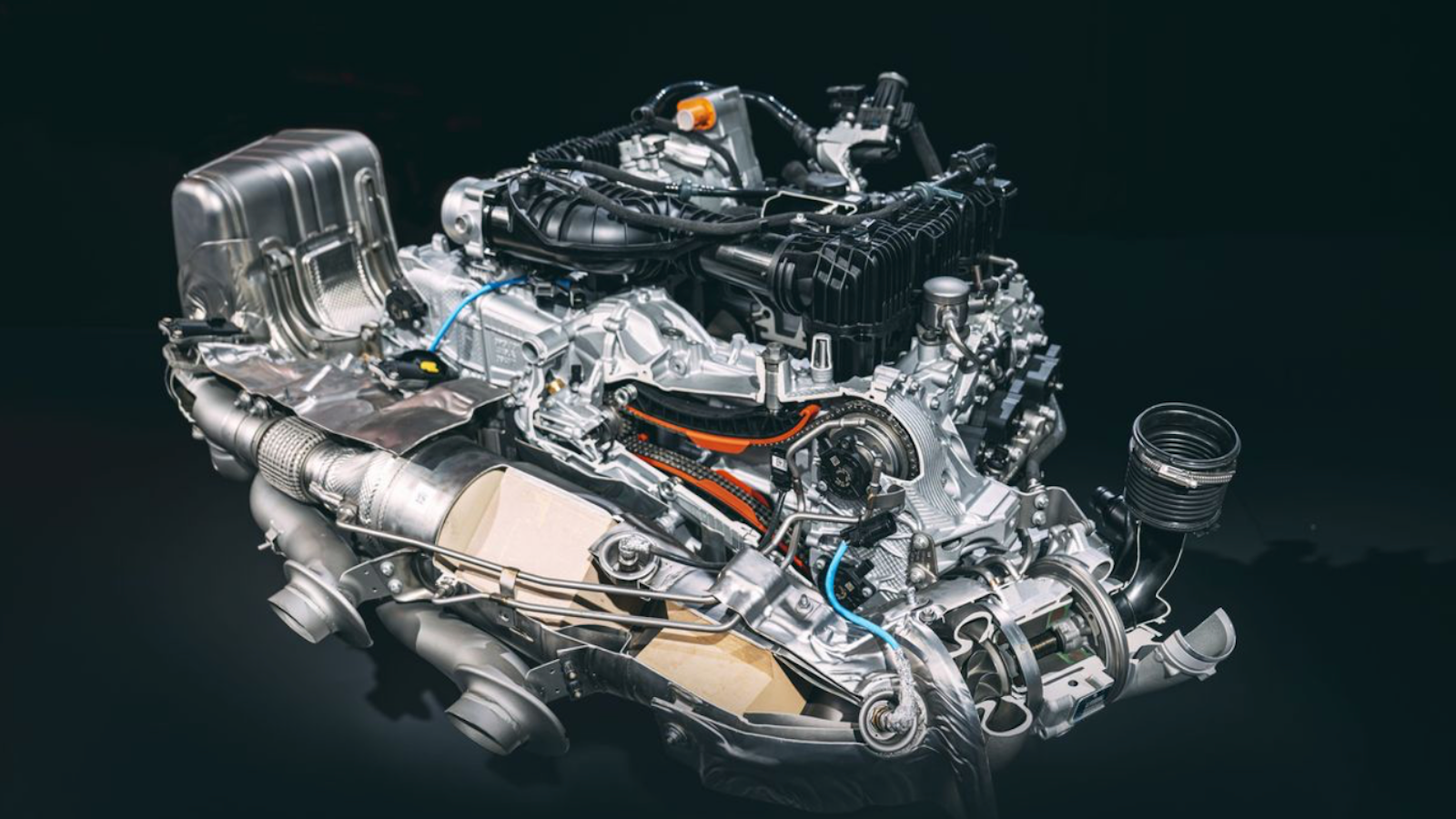6 Things to Know about the Porsche 911 T-Hybrid Powertrain
The new 2025 Porsche 911 GTS T-Hybrid is a much more advanced marvel than it might seem on the surface.














Fascinating Tech
The recent debut of the refreshed 2025 Porsche 911 is notable for a number of reasons, including the iconic model's updated exterior styling, as well as the controversial decision to remove the beloved analog tachometer and add a push button start. However, the biggest news is the arrival of the first electrified 911 - the GTS T-Hybrid - and it's a pretty fascinating piece of tech, too.
Photos: Porsche
Brand New Engine
One of the more notable things about the 2025 911 in general is the fact that it uses a large version of the 9A3B6 powerplant, as more bore and stroke have taken displacement from 3.0 liters up to 3.6. However, in terms of physical size, the engine is 4.3 inches shorter from top to bottom, which makes room for the hybrid's power-control electronics. Interestingly, Porsche has also ditched the accessory drive and reduced the size of the crankshaft counterweights, which shaves 40 pounds of total engine weight as well.
Photos: Porsche
Lambda 1
In spite of this increase in displacement, a higher compression ratio, and more turbo boost, the new 911 powerplant only generates five additional horsepower compared to the outgoing unit, however. This phenomenon can be traced to what's known as Lambda 1 - which means that fuel and air ratios are perfectly balanced at all times. This eliminates the possibility of running rich, but also requires that ignition timing be retarded to control detonation when combustion chamber temps rise, which also cuts power. Since Lambda 1 is still a requirement in Germany, that prompted Porsche to go this particular route.
Photos: Porsche
Electric Turbo
The 992.2 has also ditched the twin-turbo setup of the outgoing model, replacing it with a single electronic turbo. The addition of a 20-kW motor to that unit makes a huge difference in terms of filling in the gaps at lower rpm and eliminating turbo lag - in fact, achieving full boost at full throttle now takes less than a second compared to three seconds in the 992.1. The new turbo is also larger than the older units and doesn't utilize a wastegate, to boot.
Photos: Porsche
Asymmetric Exhaust
With the new turbo mounted on the right-hand side of the new engine and receiving exhaust gas from a crossover manifold, the muffler is now located on the left side. Turbo exhaust is routed to the muffler inlet via a big pipe, which contains the particle filter and catalyst.
Photos: Porsche
Motor-Generator
The motor-generator mounted in between the new 911 powerplant and its revised, more compact eight-speed PDK dual-clutch gearbox is another power-adding element. That permanently excited synchronous unit generates a max of 54 horsepower and 110 pound-feet of torque, taking the car's total output from 478 horsepower and 420 pound-feet to 532 and 449. However, the 911 T-Hybrid can't run on electric power alone as there's no clutch between the e-motor and gas engine.
Photos: Porsche
Battery Pack
The final piece of the T-Hybrid puzzle is its lithium-ion battery, which has a max gross energy capacity of 1.9 kilowatt-hours and weighs around 60 pounds. It utilizes its own liquid cooling system and is located in the same spot as the 12-volt battery, which still powers accessories when the engine isn't running.
Photos: Porsche
